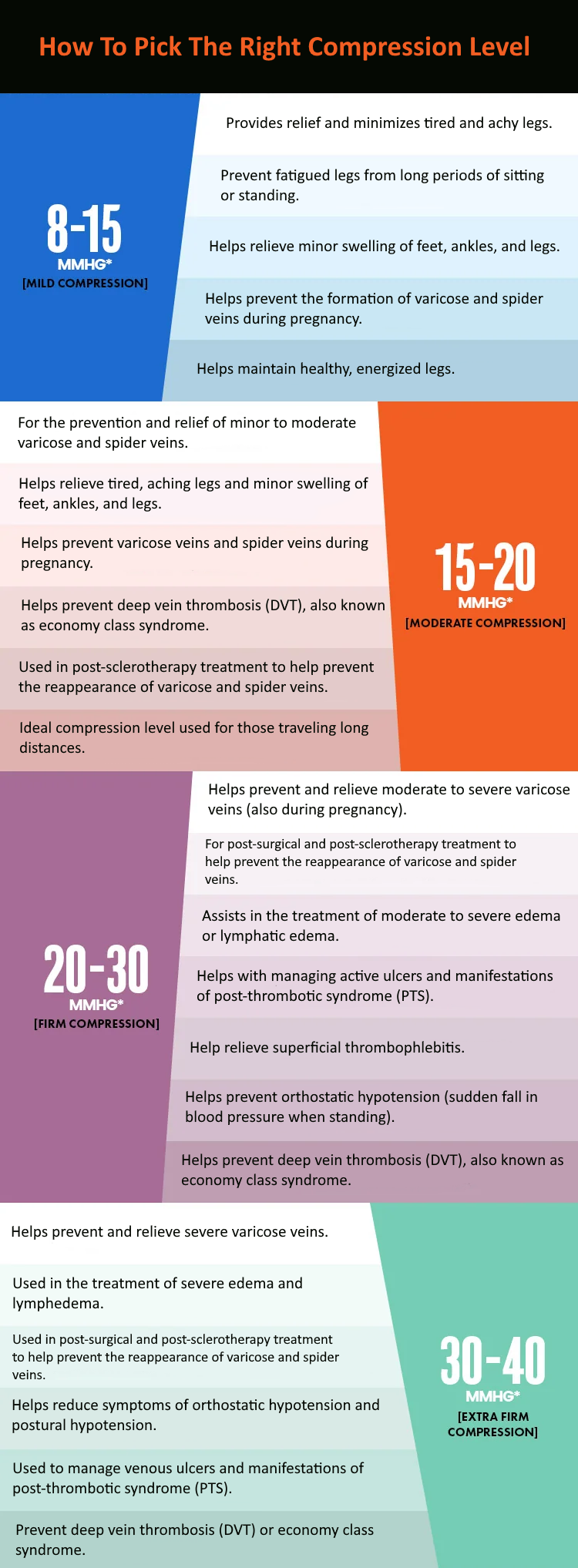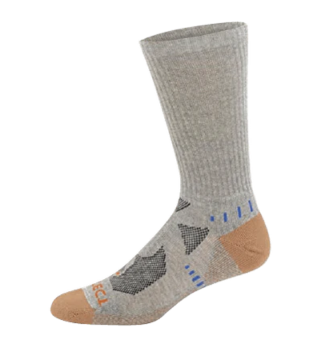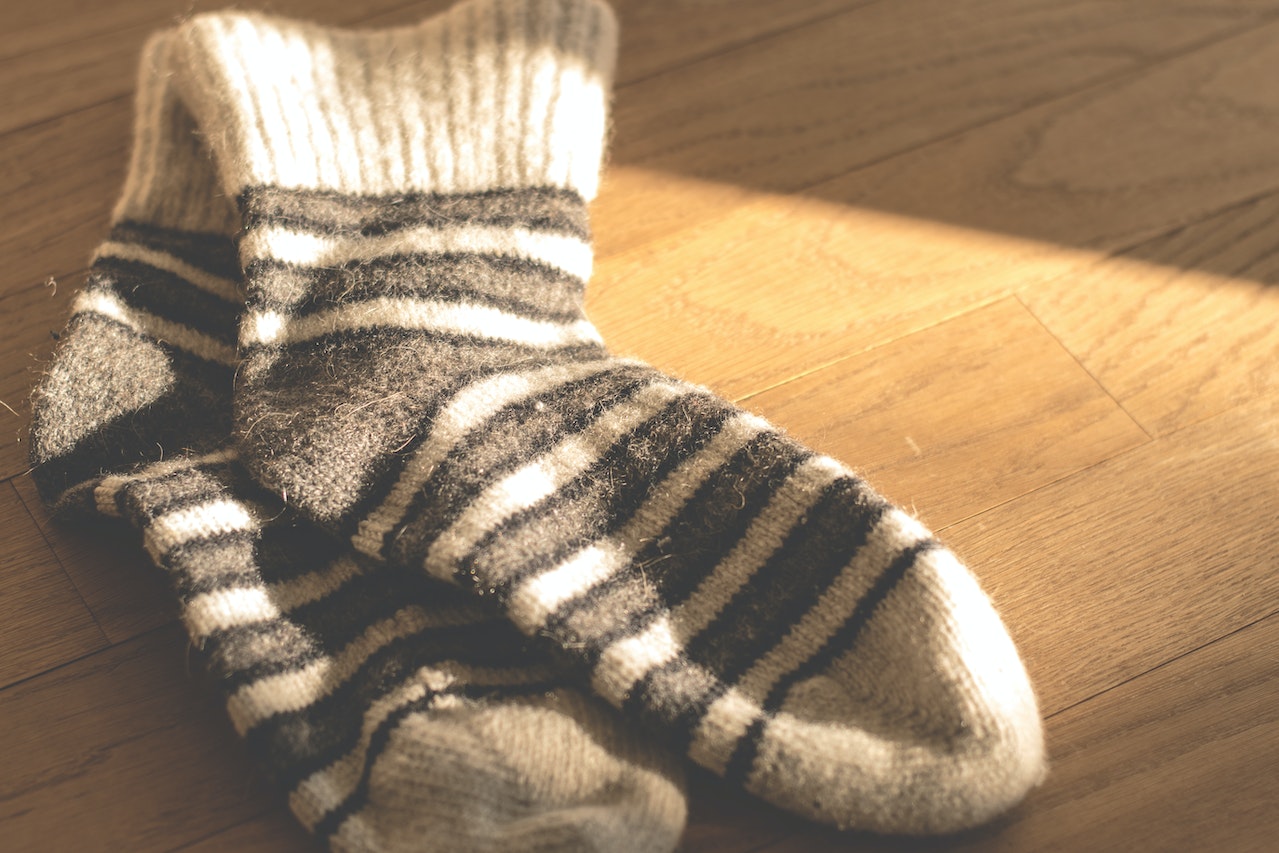
With so many options, you might wonder which type of sock is right for you, diabetic socks or compression socks. Both have their advantages and disadvantages, along with unique medical benefits.
Understanding their key differences makes choosing the right option for you significantly easier, leaving us with one question. Diabetic socks vs compression socks - which is better?
Diabetic Socks vs Compression Socks Compared
A Detailed Breakdown of Diabetic Socks
Diabetic socks are loose-fitting and designed to provide comfort and protection for people with diabetes, especially those experiencing neuropathy or other foot-related issues. Diabetic socks have extra padding, which helps alleviate pressure points, reduce friction, and maximize comfort.
They are designed to conform to the shape of your foot, with minimal seams and no elastic bands that could restrict circulation. Diabetic socks also have moisture-wicking properties, keeping your feet dry and clean, along with keeping your feet bacteria and fungi-free.
Are Diabetic Socks Compression Socks?
Diabetic socks are not the same as compression socks. Diabetic socks focus on a loose fit to maximize comfort, while compression socks rely on gently squeezing your leg to improve blood flow.
While on paper, they’re complete opposites; you can find diabetic compression socks on the market. They boast the benefits of moisture-wicking properties and compression, keeping your feet clean while improving circulation. But we recommend talking to your doctor to ensure they’re the right option.
The Benefits Of Wearing Diabetic Socks
Typical benefits of wearing diabetic socks include:
- Reducing pressure points and friction in critical areas, such as the toes and heel
- Providing extra padding for increased comfort
- Protecting your feet from blisters, ulcers, and skin irritations
- Promoting proper circulation
- Minimizing the risk of infections by keeping your feet dry and preventing bacterial or fungal growth
Potential Side Effects Of Diabetic Socks
For most people with diabetes, there are little to no side effects while wearing diabetic socks. But you can run into issues if the socks don't fit properly or are too tight; they may cause discomfort or restricted circulation.
However, we recommend talking to your doctor about which socks are suitable for you and your needs. We also recommend regularly examining your feet and checking for any changes or new issues if you’ve recently bought a pair of diabetic socks.
A Detailed Breakdown of Compression Socks
What Are Compression Socks?
Compression socks are designed to apply pressure to your lower legs, helping to maintain and improve blood flow while reducing discomfort and swelling.
They often feature bands that start at the ankle and extend up to the knee or higher, effectively providing pressure on your lower legs to encourage proper blood flow and prevent blood from pooling in your feet.
The Benefits Of Wearing Compression Socks
Typical benefits of wearing compression socks include:
- Improved circulation
- Reduced swelling
- Prevention of blood clots
- Reduced pain and numbness
- Prevention of varicose veins
Potential Side Effects Of Compression Socks
While compression socks offer various benefits, they have side effects you should be aware of, most of which revolve around fit. You must find the right size of compression socks for your feet.
The wrong size could result in too little or even too much compression, providing little to no benefits or leading them to cause new problems actively. Compression socks also aren’t the right choice for everyone; some medical conditions, like peripheral artery disease, can worsen if you start wearing compression socks.
We recommend talking with your doctor before trying compression socks. While helpful, they aren’t a one-size-fits-all solution, so getting a second opinion from a medical professional is essential.
The same goes for compression strength; varying levels of compression are best for different situations. Where too little compression won’t provide the benefits you need, while overly firm or tight compression can cause extra stress and damage.

Who Should Not Wear Diabetic Socks
Individuals who smoke heavily tend to suffer from constricted blood flow, making it difficult for the body to keep their feet warm or heal properly. Diabetic socks aren’t designed to provide support, making them a poor choice for those who need supportive socks.
Who Should Not Wear Compression Socks
While compression socks can benefit many people, they aren’t perfect. Individuals who don’t need supportive socks will develop new problems after switching to compression socks. People who suffer from severe blood circulation problems or even diabetes should talk to their doctor before trying them out.
Which Type Of Sock Should You Wear If You Have Neuropathy?
If you have neuropathy, especially diabetic neuropathy, picking the right sock to alleviate pain and prevent foot problems is necessary. If you have neuropathy and are deciding between diabetic socks and compression socks, consider the following factors:
- Diabetic socks are designed to provide a comfortable fit while minimizing irritation to your feet. They are typically made of moisture-wicking, seamless, breathable materials such as cotton or bamboo fiber.
- Compression socks are designed to improve blood flow and reduce swelling in your lower extremities by applying graduated pressure.
- Foot problems: If you primarily struggle with foot ulcers, blisters, or fungal infections, diabetic socks would be a better choice due to the moisture-wicking and seamless design.
- Pain and swelling: If you have neuropathy and experience pain alongside swelling, consider wearing compression socks with a moderate compression level.
- Seamless design: Both diabetic and compression socks should have a seamless design to prevent irritation and rub against your skin. Always look for this feature when making your decision.
We recommend consulting with your healthcare provider to determine the best option for your specific needs.
Are Copper-Infused Socks Better For Diabetics?
As a person with diabetes, you might consider copper-infused socks to help alleviate symptoms and improve your overall foot health. Copper-infused socks come with several benefits that can help you manage your diabetes more effectively, including:
- Antimicrobial properties that help kill bacteria and fungi
- Improved circulation
- Moisture-wicking properties that keep feet clean and dry
- Eliminating foot odor
We highly recommend copper-infused socks for individuals looking to manage their diabetes more effectively.
Conclusion: Diabetic Socks vs Compression Socks
Diabetic socks primarily protect your feet and reduce the risk of injury or irritation with features such as seamless designs, moisture-wicking materials, and added padding. They are typically loose-fitting, aimed at promoting foot health and preventing complications that can arise for people with diabetes.
On the other hand, compression socks are snug-fitting and work by compressing your lower legs and feet, which helps improve circulation and reduce swelling and pain associated with poor blood flow.
Considering which type of sock best suits your health and comfort, consider each option's distinct benefits. Diabetic socks protect your feet, whereas compression socks boost circulation and reduce fluid buildup in your lower extremities.






Leave a comment
This site is protected by hCaptcha and the hCaptcha Privacy Policy and Terms of Service apply.